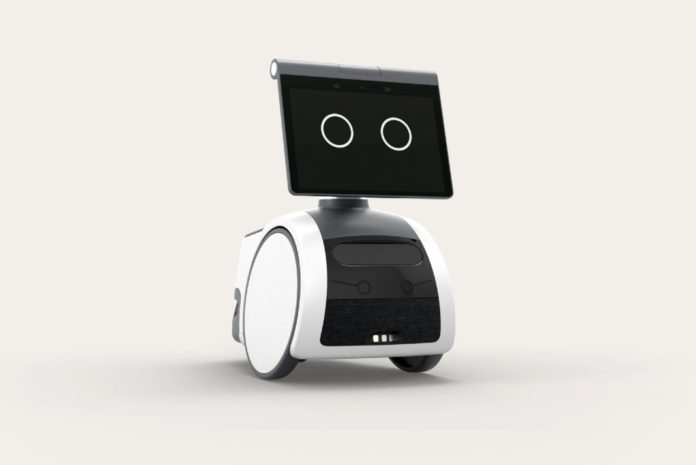E-commerce giant Amazon has revealed Astro, their first home robot
On Tuesday, Amazon announced their long-awaited innovation of the home robot named the Amazon Astro. The home assisting bot is intended for helping out household needs similar to what would be an Amazon Echo device on wheels with a display and far superior artificial intelligence.
Amazon has stated the Astro can accomplish a wide array of tasks such as remembering faces, mapping out floor plans, delivering items, playing music, and taking commands. The home robot is like a combination of the tech giant’s generational products and their capabilities all packaged into one. The size of the Amazon Astro is about 2 feet tall and weighs 20 pounds. The wheels are a foot in diameter and the bot can travel at any angle or direction at a top speed of just over 3 feet per second.
The Amazon Astro home robot is built with a Qualcomm chip and contains five motors. One for each wheel base, one to raise and lower its 42-inch 12-megapixel periscope camera, and two to swivel and tilt the face of the robot which is built with a 10-inch touchscreen display similar to Amazon’s own Echo Show. There are a number of sensors and cameras located in the bezel of the Astro, including a 5-megapixel camera for video calls. These sensors and imaging tools, some ultrasonic and time-of-flight, allow the robot to determine depth and navigate within its “habitat”, or a living room per se.
To control Astro, the user will be able to utilize a smartphone app so that they can give instructions and commands to Astro so it knows where to go and what to do. For security purposes, the app is only enabled on one device to prevent any kind of unauthorized access. This might be its most overlooked function, as manipulated AI could potentially be horrifying. Maybe we’ve watched too many movies.
Beta testers of the product have stated Astro has more personality than Alexa, and that the robot felt more along the lines of a house guest or roommate than it did as a smart device. Unlike a human being, the robot will eventually lose its power. It will require about 45 minutes to charge the Astro from 0% to 100%, which can last up to about two hours in motion. Outside of user functionalities such as voice or in-app usage, the Astro home robot will be able to detect when its battery life is getting low and will travel back to its dock when necessary.
There is great potential for substantial improvements as time goes on and the AI has advanced through its usage in consumer technology. The Amazon Astro is one of the first few products to shine a light on home assisting robots, and we believe it will be a huge benefit for the elderly, security, and overall convenience in our day-to-days. Currently the home robot is only sold by invitation and costs $999. We honestly can’t wait to test one out ourselves.
